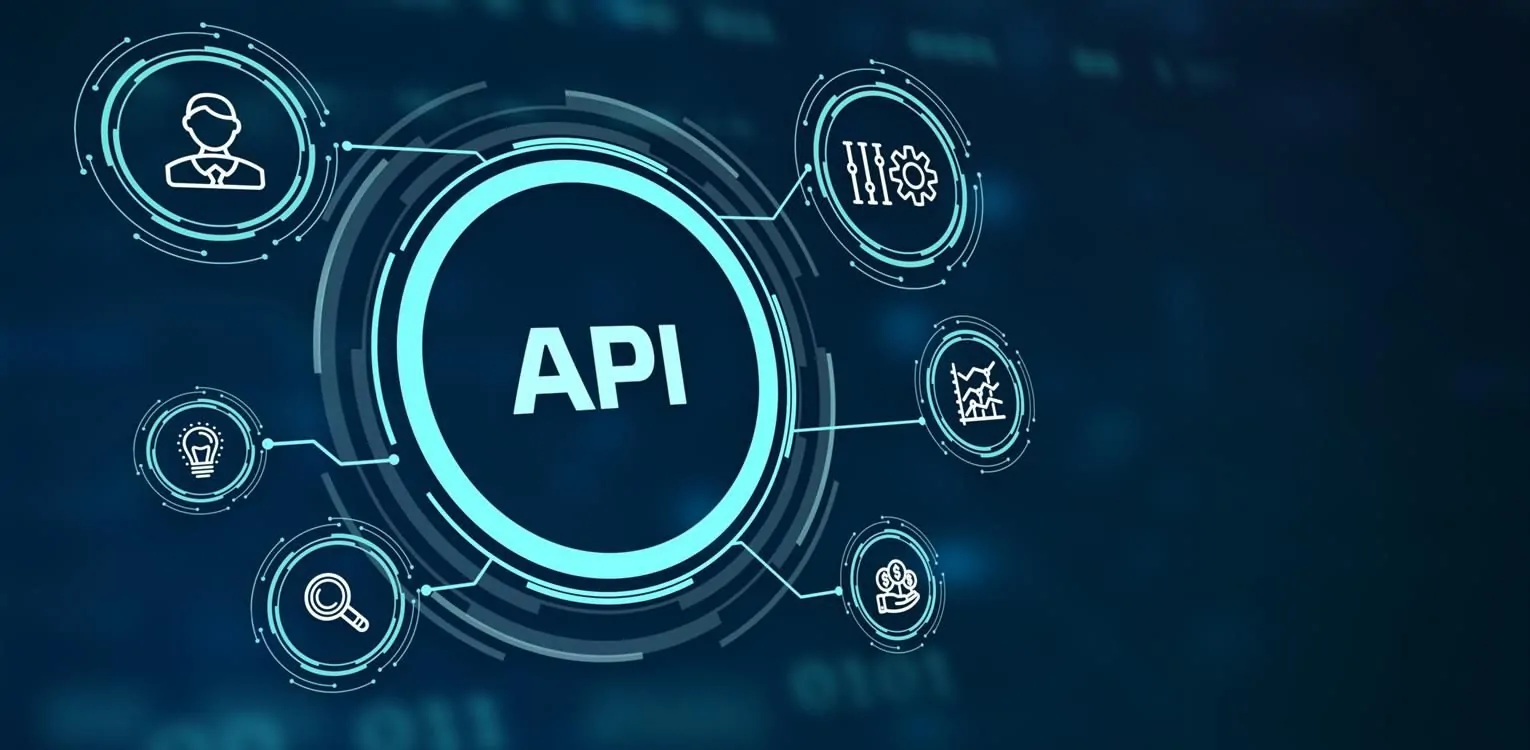An Application Programming Interface is software that lets different computer programs talk to each other. Many people wonder what API is in programming. An API allows two programs to work together smoothly. It acts as a middleman between programs to share data and perform tasks.
APIs are everywhere in the technology we use daily. When you check the weather on your phone, an API gets data from weather services. APIs securely send payment details between your app and bank when making online payments. Streaming movies uses APIs to get videos from studios to your TV.
This article will explain how APIs connect programs. We’ll examine main Application Programming Interfaces types like REST and how they work behind the scenes. You’ll also learn the benefits of APIs for businesses and developers. Finally, common questions around APIs will be answered, like how to secure and develop your own. By the end, you’ll clearly grasp this important programming tool!
What is an Application Programming Interfaces?
Now that we’ve got a basic overview let’s dive deeper into APIs and understand what exactly they are. At its core, Application Programming Interfaces stands for Application Programming Interface – but what does that mean? On a basic level, an API allows two “applications” like programs, websites, or other services to communicate. But what are these “applications”?
Applications are any type of software that performs a specific function. For example, a weather app provides forecasts, a mapping app shows directions and an e-commerce site lets you shop online. Each of these is considered an “application”.
The “Interface” part refers to how these applications interact. An interface is essentially a contract that defines how two apps will communicate – things like the format of the data they exchange and the specific “requests” and “responses” they use.
So, putting it together, an API acts as an agreed-upon messenger between two apps. It allows them to quickly request services from each other and exchange the necessary data to get the job done smoothly.
Understanding the Client-Server Relationship

To better grasp how APIs facilitate this exchange, let’s look at the standard client-server model most APIs use. In this setup:
● The “client” is the application making a request, like your weather app.
● The “server” is the application providing a service, like the weather database.
So when your weather app needs current conditions, it requests an Application Programming Interfaces to the weather server. The server processes this request, retrieves the weather data, and sends a response to the client app.
This request-response process allows different programs to seamlessly share data and functionality without directly interacting with each other. The API handles all the communication behind the scenes!
Main Application Programming Interfaces Types
Now that we have a foundation for APIs let’s dive into the main types used today. Understanding their differences will help determine the best fit for your needs.
REST APIs
REST, or Representational State Transfer, has become the most popular architecture for web APIs. With REST, apps make HTTP requests to access and use data. Some key aspects include:
- Uses common verbs like GET, POST, PUT, DELETE
- Requests and responses are stateless
- Data is sent as plain text, usually JSON or XML
Due to its simplicity and flexibility, REST has been widely adopted. Major tech companies like Twitter, Facebook, and Google have RESTful APIs powering their platforms.
SOAP APIs
SOAP (Simple Object Access Protocol) is an older standard that encodes requests and responses as XML documents. It’s more complex than REST but offers features like:
- Stronger typing of data through XML schemas
- Support for message attachments and transactions
SOAP is still used for enterprise APIs requiring robust features. However, its complexity makes it less popular for modern web services.
RPC APIs
RPC (Remote Procedure Call) APIs mimic traditional procedure calls. Developers call functions on remote systems like calling local functions. This makes RPC intuitive but less flexible than other architectures. It works well for enterprise or legacy systems.
WebSocket APIs
With WebSockets, two-way communication channels open between client and server. This enables real-time data transfer without polling. Famous for streaming data or building interactive apps like chat.
The right Application Programming Interfaces type depends on your needs. But for most use cases today, REST has become the standard for its simplicity and broad platform support. Understanding the differences will help choose the best approach.
How APIs Work Behind the Scenes
Now that we’ve covered the main Application Programming Interfaces types, let’s peek behind the curtains to see how they work their magic. Understanding the process will help you leverage APIs effectively in your work.
At its core, an API enables communication through a structured request and response process. When your app needs data from another service, it makes a request using that service’s Application Programming Interfaces endpoints – think of these as the service’s mailing addresses.
Your request includes essential details like:
- The URI (Uniform Resource Identifier) – think of it like the endpoint’s street address
- The verb specifying the action (GET, POST, PUT, DELETE)
- Any headers with metadata like authentication tokens
- For some verbs, a request body with parameters or payload
This request gets sent to the Application Programming Interfaces server, usually over HTTP. The server then processes the request, retrieves the needed data from its databases, runs business logic rules, and prepares a response.
The response contains:
- A status code indicating success or failure
- Headers with additional metadata
- For successful requests, a response body with the returned data
The response travels back to the requesting app, and any data returned gets parsed and used within the app. All this happens seamlessly behind the scenes!
APIs simplify what could otherwise require direct database access or complex integrations. By leveraging standards like REST, different systems can easily exchange information. This streamlines development and allows innovative new applications to be quickly built.
Application Programming Interfaces Benefits for Businesses
By now, you can see how APIs are revolutionizing software development. But what’s in it for businesses? Well, APIs offer enormous advantages for companies, both large and small.
Speed Development and Integration
APIs allow organizations to break apart monolithic systems into modular services. Developers can quickly integrate new features by tapping into existing data sources via APIs instead of building everything from scratch. It accelerates time to market.
Enable Innovation Through Partnerships
Forward-thinking companies open their APIs to allow external partners and developers to build on their platforms. It expands their ecosystems and inspires new applications that can drive more customers. Everyone wins!
Improve Customer Experiences Across Channels
With APIs, businesses provide consistent, seamless experiences everywhere their customers engage – on mobile apps, websites, IoT devices, and more. It enhances brand loyalty through a unified brand experience.
Generate New Revenue Through APIs as Products
Many firms now successfully monetize their APIs, treating them as standalone products. As platforms, they open opportunities to sell subscriptions, transactions, and more. It diversifies revenue streams.
The opportunities are endless. By adopting Application Programming Interfaces-led connectivity, even traditional enterprises can supercharge innovation, better serve customers, and transform digitally for the future. The winners will be those who embrace open APIs to develop partnerships, experiences, and revenue models not previously possible.
Securing APIs

Now that we’ve seen the incredible benefits APIs provide, it’s essential to discuss security. After all, APIs are a direct line into internal systems – so protecting them is mission-critical.
Authentication Using Keys and Tokens
APIs commonly authenticate requests through short-lived tokens or long-lived keys. Tickets are included with each submission, while keys uniquely identify an application. It verifies the requester is who they claim to be.
Authorization for Controlled Access
Once verified, the requester’s privileges need to be determined. APIs restrict access per token or key to only allow authorized operations. It prevents unauthorized data access or changes.
Best Practices for Protection
Developers should enable HTTPS to encrypt traffic and ensure tokens/keys are never exposed. Additional guidelines include input validation, limiting response sizes, and banning suspicious IP addresses. Education also helps by following security best practices.
Testing for Vulnerabilities
Even with precautions, security holes may exist. Penetration testing probes APIs like an attacker to find flaws. Issues get prioritized and resolved to harden defences. Continuous testing ensures protection keeps pace with threats.
Monitoring and Logging
With the right tools, APIs can be monitored for abnormal behaviour patterns. Logs of requests and responses help trace any security incidents. Metrics provide insights for optimizing performance and availability as well.
When implemented correctly, these strategies make APIs difficult to exploit while enabling innovation through open access. Ongoing diligence from security and development teams is critical to ensuring APIs remain safe gateways to internal systems and data.
Conclusion
● APIs act as intermediaries that let programs request data from each other using defined protocols
● The main Application Programming Interfaces types are REST, SOAP, RPC and WebSockets, with REST being the most widely adopted
● APIs simplify development and power experiences across devices through their request-response process
● Businesses can accelerate innovation, improve experiences and unlock new revenue through strategic Application Programming Interfaces usage
● Securing APIs is crucial through authentication, authorization, testing and monitoring
Frequently Asked Questions
What programming languages are used to build APIs?
APIs can be built with many popular languages like Java, Python, JavaScript/Node.js, PHP and C#. The choice depends on your existing infrastructure, frameworks, and developer expertise. However, modern APIs are often developed with Node.js due to its asynchronous nature and extensive ecosystem.
How do I get started with Application Programming Interfaces development?
The first step is planning – decide your Application Programming Interfaces goals and design the endpoints. Then, choose a framework like Express or Flask for prototyping. Build out authentication, versioning and documentation. Test your API using tools like Postman before integrating. Monitor performance and security. Finally, promote your Application Programming Interfaces so others can build on your work! With the right resources, anyone can start their API journey.
What is the difference between public and private APIs?
Public APIs are openly accessible by any developer, while private APIs only restrict access to authorized internal or partner applications. Public APIs aim to grow an ecosystem but require strong security. Private APIs integrate internal systems and share controlled access for collaboration between teams or partners. Both have their uses depending on your integration needs.
How can APIs help grow my business?
APIs open many doors for business growth. Empowering external developers and partners allows you to expand your customer base. APIs drive new revenue streams when offered as standalone products. They help enter new verticals by enabling customized experiences. APIs improve operations by integrating internal systems. And they accelerate innovation by testing new ideas faster without significant upfront costs. Overall, a good Application Programming Interfaces strategy can help transform and scale your business.
What tools can help manage and monitor APIs?
Effective API management requires the right tools. Popular options include Postman for testing, Swagger/OpenAPI for documentation, and Application Programming Interfaces Gateways for access control. Tools like Kong and Tyk provide API management platforms. New Relic, Datadog and other APMs help monitor performance. Prometheus and Grafana are great for metrics and alerts. For logging, look to ELK Stack or Splunk. Version control and issue tracking with GitHub are also helpful. Choosing tools that fit your needs makes APIs much more accessible to develop and maintain at scale.



